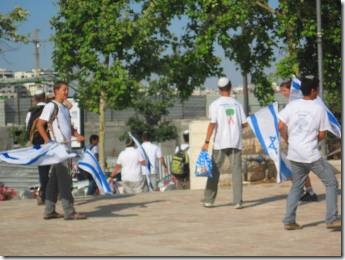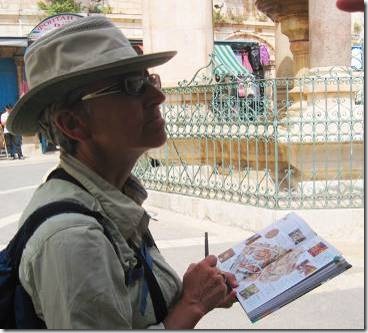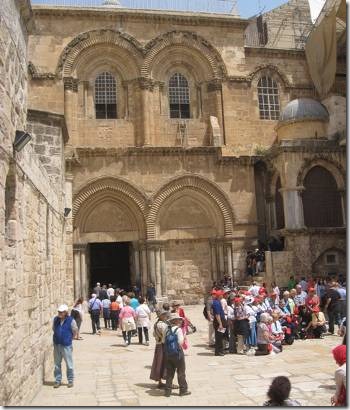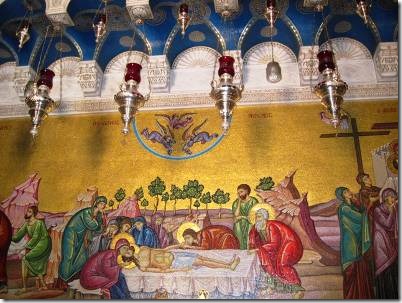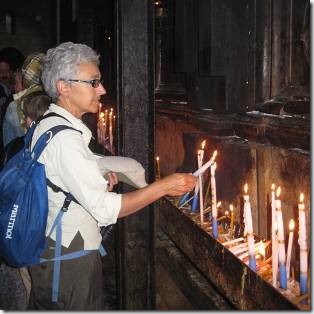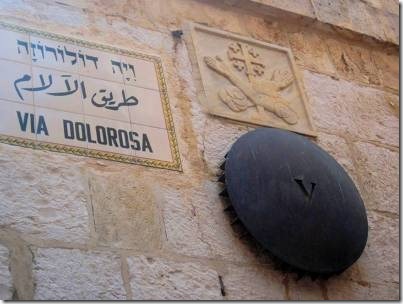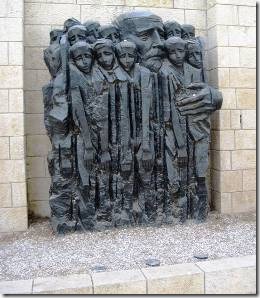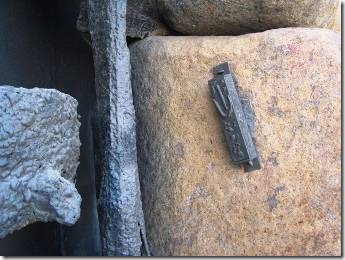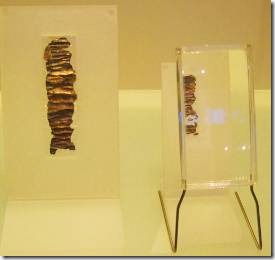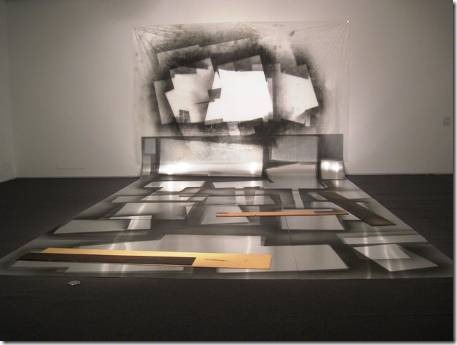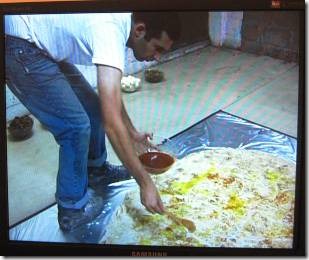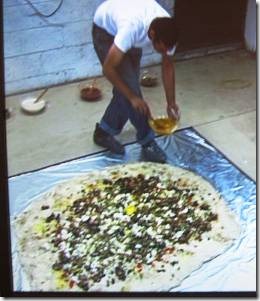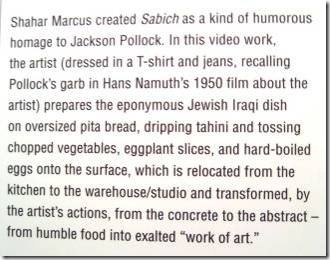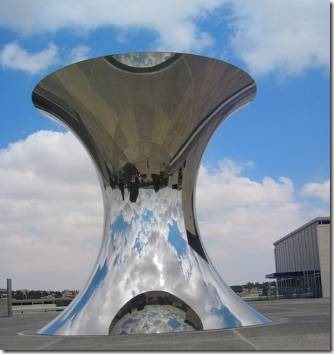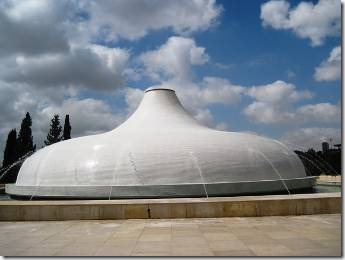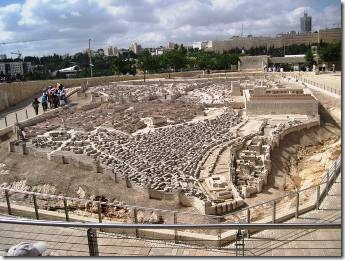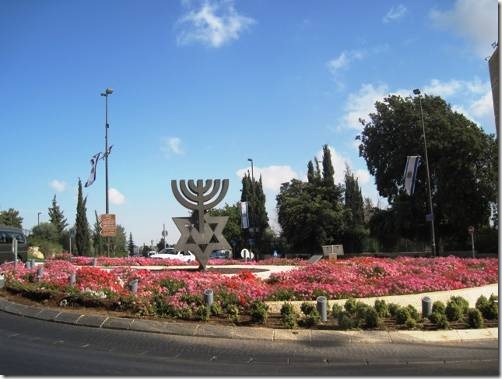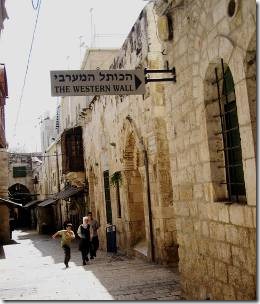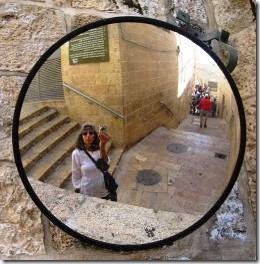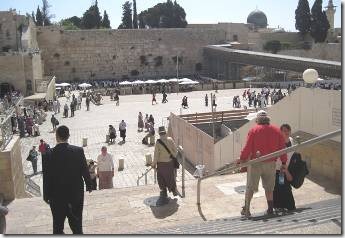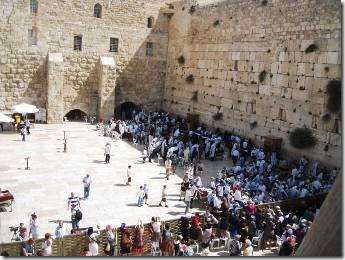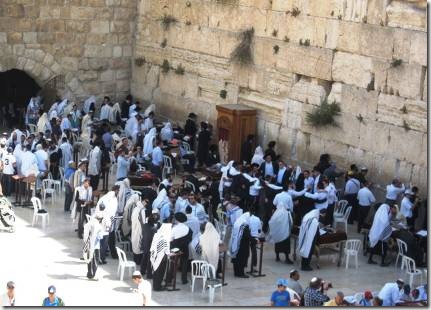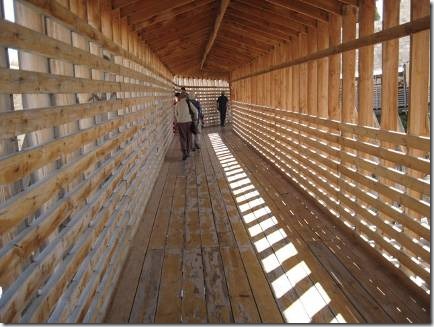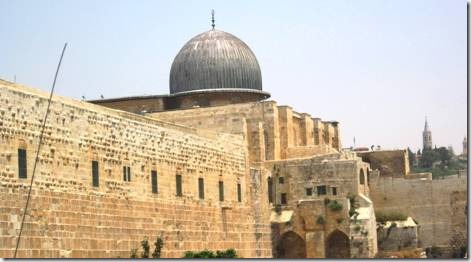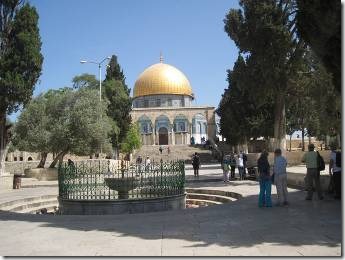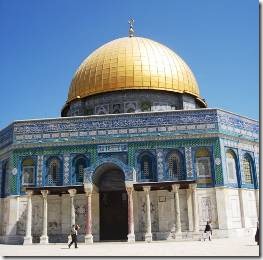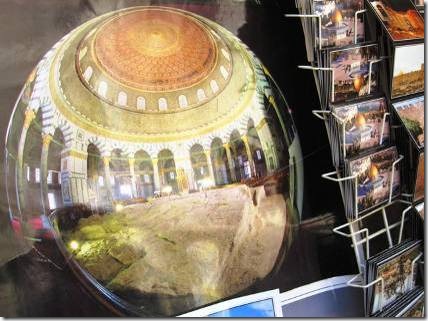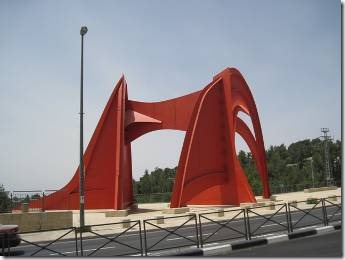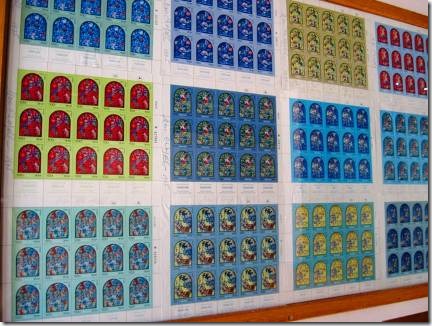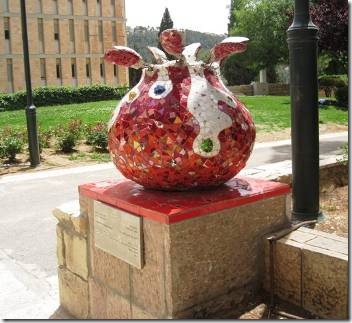Shalom and Happy Shavuot (Saturday night through Sunday evening)
We had some Israeli visitors yesterday. DoraMac attracts anyone who knows anything about boats. I was working on this email about our visits to Jerusalem, and I told them that it has been a struggle. They asked me why, and I said that it was just too much history to condense into a few sentences under the photographs. And I told them that Jerusalem was “a feeling.” You either feel it and that’s all that matters; or you don’t and then it doesn’t matter. And those feelings just can’t be conveyed in an email. They smiled and agreed.
So I’m just going to post the photos I have, tell you how I came to take them, and not try for more.
“There’s an old story we all learned as children about a stranger who came to the two teachers of the first century, Hillel and Shammai, with an odd request.”Teach me the Torah while I stand on one foot."
First, he came to the sage, Shammai and he makes his request, "Teach me the Torah, Rabbi, as I stand upon one foot." The Talmud teaches that Shammai picked up a builders rule, a piece of a two by four, and smacks him along side of the head, and the man left him.
Then he came to Hillel and made the request, "Teach me the Torah as I stand on one foot." So Hillel taught him: "That which is hateful to you, do not do to your fellow. That is the whole Torah, all the rest is commentary. Zil u’gemar, now, go and learn it."
http://www.vbs.org/page.cfm?p=475
I post that story here because I asked a version of that question to the Visitor Center volunteer just inside the Old City at the Jaffa Gate. He was a very wise man, knew the story, and gave me the same answer Hillel gave. I told him that I felt myself becoming “more Jewish” in Israel and I couldn’t understand why not being observant or spiritual. He told me that by being in Israel I was “with” all of the Jewish people important to me, and if I am honest, I have to say I think he was right. For me, being in Israel, especially Jerusalem, is more about emotional connections than intellect. And as lovely as that is, it’s probably why problems here are so hard to solve; the heart definitely gets in the way of the head. If Herzliya were the entire country, things would be so much simpler; it’s a big resort city looking to the future rather than the emotionally filled historic past.
Jerusalem Day marchers.
Our second visit to Jerusalem coincided with Jerusalem Day. We avoided the Old City and spent the day at the Israel Museum. Monday some streets were closed and our Jericho-Bethlehem tour bus driver said it was because of incidents connected with Jerusalem Day. We weren’t aware of any disturbances that took place Sunday, Monday while in Palestinian controlled Jericho or Bethlehem, or Tuesday when we visited the Old City and were in East Jerusalem at the Dome of the Rock, Damascus Gate and in the Arab section on Nablus Rd.
“Sunday was Jerusalem Day in Israel, a holiday once again observed by thousands of young Jews who chanted as they marched through Arab neighborhoods conquered in the 1967 Six Day War. The tension is always highest in the narrow passages of the largely Palestinian Old City. So much so that the city’s police this year tried to route the column of youths — most singing patriotic and religious songs, a few chanting “Death to the Arabs” — away from the Arab Quarter. But in the end, the police proved powerless against tradition, and the original route was restored. On Jerusalem Day, marching through the Arab Quarter is the whole point” …………………………..
Linda as tour guide.
Our first trip to Jerusalem we did the whirl wind tour of the Old City and Yad Vashem. Our second trip we were already veterans and went by ourselves.
Church of the Holy Sepulchre
The Church of the Holy Sepulchre, known as the Church of the Resurrection (Anastasis) to Eastern Orthodox Christians, is a church in the Old City of Jerusalem that is the holiest Christian site in the world. It stands on a site that is believed to encompass both Golgotha, or Calvary, where Jesus was crucified, and the tomb (sepulchre) where he was buried. The Church of the Holy Sepulchre has been an important pilgrimage destination since the 4th century. http://www.sacred-destinations.com/israel/jerusalem-church-of-holy-sepulchre Several different Christian sects have different sections in the Church.
I really am quite ignorant about the Christian faith so I’m not going to attempt any commentary at all. But if you have questions, ask me and I’ll ask Reverend Ken to answer them for you. Reverend Ken, married to Randal’s sister Linda, is a minister with enough of a sense of humor to have officiated at our wedding.
Linda lit candles.
The Via Dolorosa is marked with the Stations of the Cross.
This is the 5th station of the Cross.
…………………………………………………..
During our first trip to Jerusalem we made an all too brief stop at Yad Vashem. It would take days to watch all of the video presentations and read all of the displays. Many visits are necessary. You know what you will read: you know what happened, but the stories are all about individuals and you want to listen. Taking photos is not allowed in the buildings. But while I was walking through the museum I saw a photo of a man who looked like he could have been my father at a young age. I wanted to take his photo which had no name. http://www.yadvashem.org/
Outside the memorial to the children who were murdered: a sculpture and a mezuzahs on the building.
…………………………………………………………………
During our second trip to Jerusalem we visited the Israel Museum including the Shrine of the Book exhibit that houses the Dead Sea Scrolls. In the main museum, in the morning, we joined the 11 am guided tour through the archeology section which was very good. After lunch we just wandered the museum until the tour of the Shrine of the Book in the afternoon.
http://www.english.imjnet.org.il/htmls/home.aspx Israel Museum Jerusalem
The prayer we heard at the end of every service.
I had read the following story in Bruce Feiler’s Walking the Bible so seeing the silver amulet with the familiar prayer was a favorite part of the museum for me.
“In his lecture, {Gabi} Barkay described how in 1979 a group of 12-year-olds from an archaeology club in Tel Aviv had come to the dig. Barkay thought the children were “pesky.” One in particular, a boy named Nathan, was always “tugging on my shirt and asking silly questions,” Barkay said.
Barkay assigned Nathan to a far-off, unimportant task: clearing out an ancient repository cave to prepare it for being photographed. Nathan took to the task with a hammer, and “expressed his frustration by hammering the floor of the repository.” Barkay recalled being quite perturbed when young Nathan, who had not been on task for much time at all, tugged on this shirt to tell the archaeologist that the hammer had broken through the floor of the cave and there was something below.
Upon inspection, Barkay realized that what he had thought was the floor of the chamber was, in fact, the ceiling of another ancient chamber underneath. Nathan had opened up a chamber where Barkay would make his most renown discovery.
Below was a repository containing a large quantity of intact vessels dating from the fifth, sixth and seventh centuries B.C., Barkay said. Many had survived Nebuchadnezzar’s conquest of Jerusalem in 586 B.C. Glazed pottery, gold jewelry, silver, semi-precious stones and beads all gave evidence of a thriving population. Silver coins minted in Greece showed that the Hebrews were part of a network of international trade.
Skilled hands took over from Nathan and began carefully sorting through the artifacts from the newly-discovered repository. That was when the “very important” discovery came to light. During the lecture, Barkay projected a photograph of a tiny, dirty cylinder he described as “the size of a cigarette butt.” It was an amulet designed to be worn on an arm or forehead in literal obedience to Deuteronomy 6:8, an ancient precursor to what are today known as phylacteries.
“Inside [the amulet] we found a tiny, silver scroll, which took us three years to unroll,” Barkay said. “The scroll yielded 19 lines of minuscule writing … in ancient Hebrew script.” The writing included three repetitions of ancient Hebrew letters which are transliterated YHWH. “This is the private, unpronouncable name of God, which is often pronounced in the West as ‘Jehovah,’” Barkay said.
After extensive, careful analysis by experts in ancient Semetic languages, the tiny scrolls were shown to contain the earliest written example of the Aaronian benediction recorded in Numbers 6:24-26: “The LORD bless you, and keep you; the LORD make His face to shine upon you, and be gracious to you; the LORD lift up His countenance on you, and give you peace.”
“This text predates the earliest Dead Sea Scrolls by four centuries,” Barkay said in reference to the importance of the silver scrolls. “They are the oldest biblical verses identified in the world.”
http://swbts.edu/campusnews/story.cfm?id=C62B3F0C-F464-661A-0C33E28ACC002BCA
In Walking the Bible, the “Nathan” story continues……
“Did you ever call Nathan and tell him what he found?” {Feiler asks Barkay} “No, but I gave a lecture ten years later. I told the same story to a group of professional archaeologists. I realized while speaking that somebody was standing to the side of the hall. A very tall soldier. He was making me nervous. When I finished I went over and asked him why he was standing there. Was he interested in archaeology? He said, “I’m Nathan,” I was so shocked I forgot to ask him his last name. And to this day I don’t know who he is.” The story reminds me of a student my mother had when she taught Sunday School. His name is Aaron Lansky and she called him, Aaron Lansky, that rotten kid. Well Aaron grew up, shaped up, became interested in Yiddish and founded the Yiddish Book Center on the campus of Hampshire College in Amherst, Massachusetts to save thousands of Yiddish language books and insure the language continues. http://www.yiddishbookcenter.org/
After the archaeology tour we stopped for lunch and a rest. Everyone wanted to see the Dead Sea Scroll exhibit and tour, but that didn’t start until 3 pm. So we all just wandered. In hindsight I wish I’d done the Jewish Art and Life and Synagogue tours, but maybe another time. There was a Joshua Neustine exhibit and because I’d been told he was a major Jewish artist I wanted to see it. We asked a friendly museum docent how to get to the exhibit and she wasn’t sure so led us there asking guidance along the way from museum security guards. It was up stairs, over the other way, around the back….and finally we found it. Only it looked like it was either going up or coming down, the Haaretz piece was written May 17 and we were there May 20th. Very strange exhibit. I wasn’t wild about his art; but I did like this one piece. It is also the one shown in the Haaretz article.
Joshua Neustein, once a young lion of Israeli art world, shows five decades of work in New York, at new Israel Museum exhibit.
By Daniel Rauchwerger | 05:41 17.05.12 |
His exhibit has a small palette and doesn’t try to impress. Torn and folded paper, drawings, a few video works and quiet, monochromatic but also mature installations. Though he doesn’t call the show a retrospective, Neustein offers five decades of work here. A wandering Jew born in Poland and living in New York where he owns a studio, he nonetheless decided to hold this exhibit in Israel. It seems that even though he views the state as an "episode" in Jewish history, it is the foundation of his own……
Neustein immigrated with his parents to the United States as a child. He grew up in Manhattan and studied in an ultra-Orthodox yeshiva. Afterward he decided to study art at the Pratt Institute. Upon finishing his studies in 1963, he went first to Vienna and then to Jerusalem. "I wasn’t in a hurry to become an artist. I knew that I would be one; I was self-important and arrogant, but I put it off," he told Haaretz. "I wandered around Israel for two years without accomplishing very much; I lived off my parents." ………..
Tearing paper
The exhibit starts with an early series of works on paper from the end of the 1960s. Neustein scrawled pale graphite squares on white sheets of paper and then erased parts of them to create cross and oval shapes. He collected the erasures in small paper envelopes which he attached to the drawings. The value of the work is in its documentation of the act of erasure, of a sort of choreography, and not the quality of the image itself……….
"Here," he says, "there was always a struggle between [the identity of] the Jew and the Israeli. For me there was no question. I was just a Jew, a Diaspora Jew. I always saw Israel as a chapter in Jewish history."
These ideas emerge in a few of the works he created for the exhibit, notably a large map of Israel drawn on a wall and floor with cheap cellotape. "This is temporary material, like the geographic borders of the state," he says, as one of the pieces of tape falls to the floor. "The Jews are one of the first people to separate nationality from geographic location; they became wanderers. The question is whether the Israelis are also willing to be mobile. I don’t know. In another three generations, I’m not sure Israelis will exist, but there will certainly be Jews."
Much of the exhibit is devoted to works made of torn paper. From Neustein’s viewpoint, these are drawings, too. "Tearing is a kind of total drawing, the mark of a line with no turning back," he says.
Aside from the conceptual significance he attaches to these works, Neustein sees the torn paper as a symbol of falling leaves and aging.
"When I tore paper for the first time, it was a life-changing event," he says. "Suddenly I no longer belonged with Aryeh Arokh or [Yosef] Zaritsky, even though of course I liked them. This process was like boarding a ship without noticing that it was unmoored and moving far off, and impossible to stop."
http://www.haaretz.com/culture/arts-leisure/the-artist-as-wandering-jew.premium-1.430965
Randal went off to do his own wandering and I stayed in the art section; partly because it was such a labyrinth I couldn’t find my way out.
“But the current redesign has critics, too. Many say it is still easy to get lost in the museum. Some claim the new enclosed passage route is more suited to an airport. Tour guide Jeff Abel complained about the dearth of practical elements, such as toilets and benches, though he praised the improved lighting in the fine-arts wing.” http://www.hadassahmagazine.org/site/apps/nlnet/content.aspx?c=twI6LmN7IzF&b=5698175&ct=8968139
I did find this one video art presentation that I really liked because I am familiar with Jackson Pollock’s work.
I was also intrigued by this tall metal sculpture.
“The 16-foot hourglass of polished steel, reflecting an inverted sky and surrounding landscape, shines at the highest point of the grounds of the hilltop Israel Museum, Jerusalem.
Commissioned in honor of the venerable institution’s three-year expansion and redesign, Turning the World Upside Down by Mumbai-born Anish Kapoor calls to crowds in the city and beyond to come view the extraordinary objects on display at the museum. With the Knesset, the Supreme Court, the Hebrew University, the Science Museum and Bible Lands Museum grouped together on a series of hills, the Israel Museum stands for culture and reason in a city riven by religious and political strife. Like Kapoor’s new sculpture, it turns the city’s madness upside down.
http://www.hadassahmagazine.org/site/apps/nlnet/content.aspx?c=twI6LmN7IzF&b=5698175&ct=8968139
The main museum of the Shrine of the Book.
http://www.english.imjnet.org.il/htmls/page_1348.aspx?c0=14778&bsp=14389&bss933=13621
Model of Jerusalem : A Memorial to a son killed during the war for independence.
This 50:1 scale model, covering nearly one acre, evokes ancient Jerusalem at its peak, meticulously recreating its topography and architectural character in 66 CE, the year in which the Great Revolt against the Romans broke out, leading to the destruction of the Temple and the city in the year 70 CE.
The model, a Jerusalem cultural landmark, was originally built at the initiative of Holyland Hotel owner Hans Kroch in memory of his son Jacob, who fell in Israel’s War of Independence. Kroch argued that Israel in general, and in particular its capital Jerusalem – which was cut off from the Old City at the time – lacked a historical monument that could compare with the antiquities of Athens and Rome.
In 1962, Kroch approached Michael Avi-Yonah, professor of Archaeology at the Hebrew University, commissioning Avi-Yonah to create the Model and provide its topographic and archaeological basis and architectural design. The model was opened to the general public in 1966, immediately becoming a popular attraction and educational site for Israelis and tourists alike.
In 2006 the Second Temple Model was transferred to the Israel Museum campus, where it offers a concrete illustration of the period documented in the Dead Sea Scrolls, when Rabbinic Judaism took shape and Christianity was born.
Providing a vivid context for the Shrine of the Book and the Dead Sea Scrolls and for many contemporaneous archaeological artifacts displayed throughout the Museum, the Model Illustrates one of the most formative periods in the history of the Jewish people, and bears a deep connection to the symbols of modern statehood that surround the Museum campus. http://www.english.imjnet.org.il/htmls/page_1382.aspx?c0=14816&bsp=12729
We were probably too tired to appreciate The Shrine of the Book tour. Our guide rattled off too many facts and dates too fast to take it in and I was instantly lost when we “toured” the Jerusalem model. We did see examples of the scrolls and hear the adventure story that brought them to Israel. But it was too long, too late, too air conditioned and just altogether too much of a good thing. So we dropped out of the tour and went back to our hotel to rest up for our dinner adventure.
Roadside art you wouldn’t see anywhere but Israel just near the Israel Museum
……………………………………………………………….
We took the bus from Herzliya to Jerusalem on Sunday and spent the day at the Israel Museum. Monday we did a "not great" tour of Jericho and Bethlehem (more about that in a later email.) and Tuesday till mid-day we spent visiting the Old City, the Jewish and Arab parts. Linda and Charmaine wanted to see the Dome of the Rock so off we all went. It was an experience in itself crossing between the two halves of Jerusalem.
We walked down Jaffa street stopping to visit and sample the Mahane Yehuda market and next a small artists’ cooperative on Jaffa street. Then it was through the Jaffa Gate and the security of the Western Wall area through which we would take the walk way to Arab Jerusalem and the Dome of the Rock.
There was joy and prayer and noise and no problem with Randal’s shorts.
The path between the Jewish and Arabic parts of Jerusalem.
El-Aqsa Mosque
Part of the Temple Mount/Dome of the Rock complex viewed from “the other side.”
Dome of the Rock
Only Muslims are allowed inside so this postcard view will have to do. (Randal was wearing shorts and wasn’t offered any wrap for his legs, so he just left right away.”
“Thus, what today is called the Temple Mount is believed to be Mount Moriah — the place where Abraham nearly sacrificed Isaac, where the First and Second Temples were built and where the Dome of the Rocks currently stands.”
http://judaism.about.com/od/daysofmourning/f/mountmoriah.htm
Our long Tuesday in Jerusalem ended with a visit to the Chagall Windows at Hadassah Hospital. Thanks to Linda’s great tour leading we easily found our way from place to place literally stepping of the light rail onto a bus which took us right to the Hadassah Hospital and its synagogue where the windows are located.
http://www.hadassah.org.il/English/Eng_MainNavBar/About/Art+at+Hadassah/
We arrived a bit early for the 2 pm afternoon presentation. No photos are allowed which is very too bad.
Calder Stabile
Calder Statue Returns Home http://www.jerusalemfoundation.org/news_article.aspx?MID=547&CID=558&AID=738&ID=2116
After a three-year construction induced move from its original Jerusalem location, the towering red Calder statue was returned to its Mount Herzl home on March 12, 2008. The "red statue", which over the years became a symbol of modern Jerusalem was moved in order to facilitate the construction of an underground parking lot for Jerusalem’s new light-rail train.
The Calder statue, "Homage to Jerusalem – Stabile" was the last statue planned by the famous American artist Alexander Calder (1898-1976), and was installed in Jerusalem in 1977 as the result of a generous donation from the Berman Family. Calder himself chose the location where the statue would be placed, but did not live to see its installation in Jerusalem’s Holland Square. This statue and many others, were part of The Jerusalem Foundation’s plan to improve the quality of life, increase the beauty and raise cultural awareness in the city, by placing outdoor sculptures at various prominent locations throughout the city.
When the city realized that the Calder statue stood in the way of the Jerusalem light-rail system being built, The Jerusalem Foundation insisted on preserving the rights of the artists and the donor family that all changes to the statue’s location must conform to Calder’s original wishes. A public committee was appointed by The Jerusalem Foundation to take responsibility for the welfare of the statue from the moment it was moved from its place. The committee consulted with the French company that originally erected the statue, and Dr. Martin Weil, who worked with Calder to choose the statue’s location originally, was an active member of the committee.
The massive statue weighs a whopping 65 tons, is built of steel and sits on a base of nine concrete blocks. The statue had been broken apart into three pieces in order to enable its transportation, and over the course of the night of March 12, and with the aid of two of Israel’s largest cranes, the statue was reassembled, and erected in its original location. In the coming weeks that statue will be repainted "Calder Red" with paint that was specially ordered from abroad.
Stamps illustrating each of the 12 windows which represent each of the 12 tribes.
Magic Pomegranate by Ruslan Sergeev in memory of Adam Gilert

